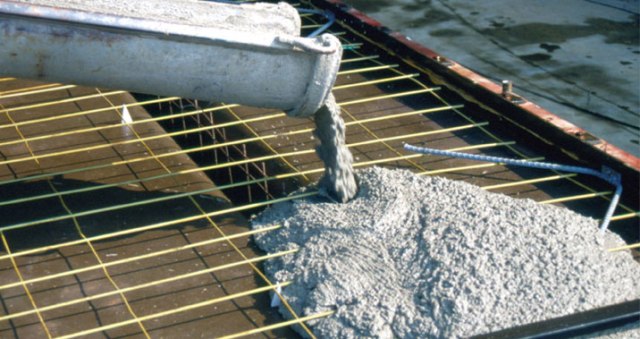
Concrete is not recommended to be placed at a temperature above 400C and below 50C without proper precaution as laid down in IS: 7861 (Part-1 or part-2 as the case may be).
IS:7861 part-1 deals with hot weather concreting and Part-2 deals with cold weather concreting.
Hot Weather Concreting
Special problems are encountered in the preparation, placement and curing of concrete in hot weather. High temperatures result in rapid hydration of cement, increased evaporation of-mixing water, greater mixing water demand, and large volume changes resulting in cracks. The problems of hot weather on concrete are further aggravated by a number of factors, such as use of rapid-hardening cements, handling of larger batches of concrete, etc.
Any operation of concreting done at atmospheric temperature above 400C may be put under hot weather concreting. In the absence of special precautions as laid down under IS: 7861 (Part-1), the effect of hot weather may be as follows:
A) Accelerated Setting
A higher temperature of fresh concrete results in a more rapid hydration of cement and leads to reduced workability/ accelerated setting. This reduces the handling time of concrete.
B) Reduction in Strength
Concrete mixed, placed and cured at higher temperature normally develops higher early strength than concrete produced and cured at normal temperature but at 28 days or later the strength are generally lower.
C) Increased Tendency to Crack
Rapid evaporation may cause plastic shrinkage and cracking and subsequent cooling of hardened concrete would introduce tensile stresses.
D) Rapid Evaporation of Water During Curing Period
It is difficult to retain moisture for hydration and maintain reasonably uniform temperature conditions during the curing period.
E) Difficulty in Control of Air Content in Air-Entrained Concrete
It is more difficult to control air content in air-entrained concrete. This adds to the difficulty of controlling workability. For a given amount of air-entraining agent, hot concrete will entrain less air than concrete at normal temperatures.
In order to avoid harmful effect of hot weather concreting IS: 7861 (Pt.1) recommends that temperature of ingredients should be controlled so that the temperature of produced concrete is lower. Mixing water has the greatest effect on lowering of temperature of concrete. The use of chilled water/ flaked ice in mixing produces adequate reduction in concrete temperature.
In order to control the temperature of concrete and to avoid adverse effect of hot weather, it is desirable to limit the maximum temperature of concrete as 350C to keep margin for increase in temperature during transit.
Click Read More for Cold weather Concreting
Cold Weather Concreting
The production of concrete in cold weather introduces special and peculiar problems which do not arise while concreting at normal temperatures. Quite apart from the problems associated with setting and hardening of cement concrete, severe damage may occur if concrete, which is still in the plastic state, is exposed to low temperature thus causing ice lenses to form and expansion to occur within the pore structure. Hence it is essential to keep the temperature of the concrete above a minimum value before it is placed in the form-work. After placing, concrete may be kept above a certain temperature with the help of proper insulating methods before the protection is removed. During periods of low ambient temperature, special techniques are to be adopted to cure the concrete while it is in the form-work or after its removal.
Any concreting operation done at a temperature below 50C is termed as cold weather concreting.
IS: 7861 (Part-2) recommends special precautions to be taken during cold weather concreting.
In the absence of special precautions, the effect of cold weather concreting may be as follows:
A) Delayed Setting
When the temperature is falling to about 50C or below, the development of strength of concrete is retarded compared with development at normal temperature. Thus, the time period for removal of form work has to be increased.
B) Freezing Of Concrete At Early Stage
The permanent damage may occur when the concrete in fresh stage is exposed to freeze before certain pre-hardening period. Concrete may suffer irreparable loss in its properties to an extent that compressive strength may get reduced to 50% of what could be expected for normal temperature concrete.
C) Stresses Due To Temperature Differentials
Large temperature differentials within the concrete member may promote cracking and affect its durability adversely. It is a general experience that large temperature differentials within the concrete member may promote cracking and have a harmful effect on the durability. Such differentials are likely to occur in cold weather at the time of removal of form insulation.
D) Repeated Freezing and Thawing Of Concrete
If concrete is exposed to repeated freezing and -thawing after final set and during the hardening period, the final qualities of the concrete may also be impaired.
In view of above, it is desirable to limit the lowest temperature of concrete as 50C
